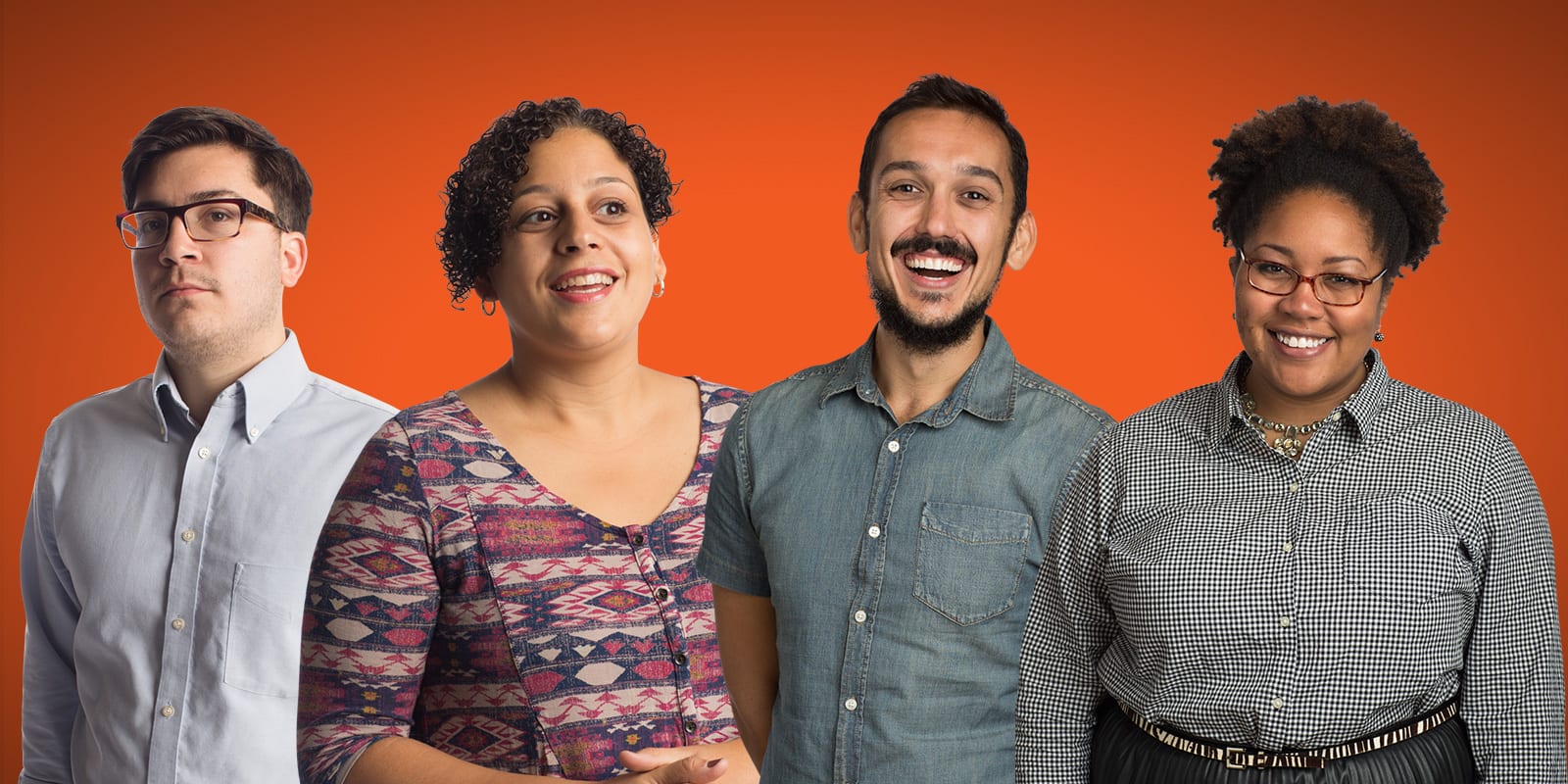Research is most effective when policy makers, community members, and other key stakeholders can understand and use it to advocate for equitable policy change. Researchers are beginning to see the value of translating their research into everyday language and sharing it more widely, which is why many of them are using podcasts to reach broader and more diverse audiences with evidence that is digestible and actionable.
No Jargon, the podcast run by the Scholars Strategy Network, is specifically intended for researchers to share findings and make policy recommendations on the most pressing political and social issues facing the country today. The podcast recently featured four Health Policy Research Scholars—each a great example of how researchers can effectively translate and disseminate research.
Below are summaries of their discussions and links to the full episodes.

Tyler Jimenez, PhD candidate in social and personality psychology, University of Missouri
Tyler studies how people’s support for certain social policies shift according to perceived threats to their beliefs and identities.
Specifically, Tyler and his team looked at changing racial demographics in the United States and conducted two studies examining how those changes might be perceived as a threat to beliefs or identities. The first asked one group to write about their own death and asked the other group to write about something more benign, like watching television. Afterward, both groups were asked about their support for a fictitious policy that attempted to reduce health inequalities between white and black people. Those in the group asked to write about their own death had lower support for this policy.
In the second study, one group read census data about white people becoming a minority group in the United States, while the other group read census data that was unrelated to race or socioeconomic changes. Both groups ranked a series of policy issues. The group that read racial census data indicated that a policy designed to reduce inequities between white and black people was not a priority, while the other group allocated more resources to that issue.
These studies have strong implications for political attitudes toward issues related to health equity, as well as the media’s role in covering impending demographic shifts in the United States. Tyler notes that media coverage can have a profound impact on public support for various health policies.
“We really need to think on the policy level because that’s where real structural and institutional change can happen.” – Tyler Jimenez

Amy Jones, PhD candidate in sociology, University of Wisconsin-Madison
Amy’s research looks at how “diversity” in higher education has had unintended consequences for students of color. Diversity became a buzz word following the Supreme Court decisions on affirmative action in the early 2000s. Following those decisions, research on the effects of diversity helped create a narrative that diversity benefits everyone. However, Amy believes that narrative is more complex and students who are doing this diversifying may not be experiencing those touted benefits.
Amy studied a student group related to hip-hop arts at a large university, which was made up of primarily students of color. Through observations and interviews, Amy found that diversity work is a performance—literal or otherwise—that students of color are expected to take part in for the benefit of white people at institutions of higher education. Amy explains that the performance of race in the name of diversity takes many forms: photos of students of color being featured in promotional materials or being called on in class to comment on all issues related to race, for example. She suggests that diversity work could be partially responsible for mental health issues that African-American students experience on campus, such as depression and anxiety.
So what can we do to improve the experiences of students of color at universities? Amy says that we must begin by reckoning with historic and current racial discrimination as a country. We must also recognize and discuss the fact that students of color feel the need to perform in white spaces and the detrimental effects that this has on these students. Amy suggests investing in more cultural centers on campuses and implementing new classroom norms that are centered on equity across schools and departments.
“In the United States, diversity is talked about almost as if it’s as American as apple pie.” – Amy Jones

Kristefer Stojanovski, PhD candidate in health policy and management, University of Michigan
Kristefer’s research examines 1) the complex factors that contribute to why people from the LGBTQ community and 13- to 24-year-old gay and black men become infected with HIV at higher rates than others, and 2) the barriers to treatment and care. In the United States, 1.2 million people are living with HIV. However, there are huge disparities among the groups affected: white and heterosexual rates of infection have decreased, while LGBTQ individuals and black men have seen rates of HIV increase.Kristefer argues that we already have the tools to eradicate HIV, including HIV testing, and medications (like PrEP). However, of those living with HIV, many do not receive consistent care due to stigma and discrimination. For example, literature has shown that doctors prejudge black patients as more likely to have sex without a condom and, therefore, withhold PrEP because they fear these patients, more than white men, will decide to have more sex without a condom. At the same time, stigma and discrimination have implications for poor mental health and have been linked to higher levels of substance use and risky sexual behaviors, which in turn can lead to higher risks for HIV infection and transmission.
In order to address disparities in HIV treatment and care, Kristefer talks about the need to meet individuals who are most at risk where they are and in ways that are meaningful to them. For example, in Canada, their HIV prevention strategy recognizes this link between poor mental health and HIV risk and encourages providers to prescribe PrEP as a prevention strategy for those populations most at risk.
“I am optimistic. We are seeing really novel strategies [to address HIV] in different places, but how can we apply them here to the United States?” – Kristefer Stojanovski

Yaminette Diaz-Linhart, PhD candidate in social policy and management, Brandeis University
Yaminette examines how health care systems can best promote the health and well-being of health care workers – especially community health workers, patient navigators, and social workers – who provide social services to patients with complex medical needs, such as chronic disease and social needs, such as housing instability.
Yaminette’s interest in the health of health care workers stemmed from her role as a director in a large health care system, where she was charged with managing public health and social service workers. She saw firsthand how organizations struggle with managing health care workers – such as social workers, community health workers, and health care navigators – who focus on social needs, rather than medical needs, of patients.
On the podcast, Yaminette discusses her pilot project, which follows a nurse and a community health worker who have teamed up to serve patients with the most complex health care needs. Their roles require they travel across multiple sites within this health system and conduct home visits for up to four or five patients each day.
Using focus groups, interviews, and an online survey, Yaminette and her team are finding that these health care workers experience high levels of stress, while expressing high levels of satisfaction with their jobs. Drawing on this and other research, Yaminette describes two ways that systems can better support health care workers:
(1) Create a culture of well-being within an organization
(2) Move beyond traditional workplace wellness programs to explore structural factors that contribute to employee stress.
We should start thinking about and shifting more toward understanding how the organization might actually perpetuate high levels of stress, including how you might design the work differently … so that they can do their work in a way that’s sustainable and healthy.” – Yaminette Diaz-Linhart

